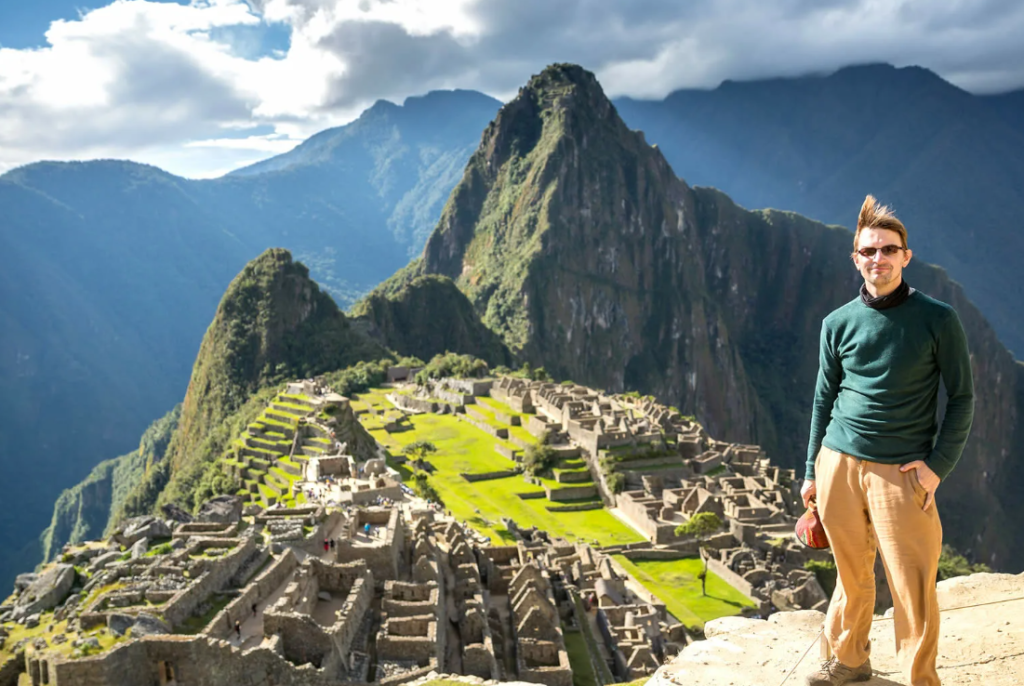Are you ready for an adventure of a lifetime? Then, get ready to be amazed by the mystical wonders of Machu Picchu, one of the world’s most enchanting destinations. Located high in the Andes mountains of Peru, Machu Picchu is an ancient Incan citadel that continues to attract visitors from all corners of the globe. With its stunning landscapes, rich cultural history, and fascinating architecture, this UNESCO World Heritage Site offers a unique experience that is truly unforgettable.
If you are planning a visit to Machu Picchu, you may have heard about the famous «Stairs of Death» This steep and challenging climb is not for the faint of heart, but for those who are up for the challenge, it promises an unforgettable experience. In this article, we will explore the Stairs of Death, their history, and what you can expect if you choose to take on this epic climb.
The History of Machu Picchu

Before we dive into the Stairs of Death, let’s take a quick look at the history of Machu Picchu. Built by the Incas in the 15th century, Machu Picchu was a thriving city for almost a century before being abandoned in the 16th century during the Spanish conquest. The city remained hidden from the world until its rediscovery by American explorer Hiram Bingham in 1911.
Today, Machu Picchu is considered one of the most important archaeological sites in the world. Its unique blend of Incan and Spanish colonial architecture, along with its stunning natural surroundings, make it a must-visit destination for anyone interested in history, culture, and adventure.
The Stairs of Death

Now, let’s get to the heart of the matter – the Stairs of Death. These steep stone steps are one of the most challenging parts of the Machu Picchu experience, but they also offer some of the best views of the citadel and its surroundings.
The Stairs of Death are located on the eastern side of the citadel, and they lead up to the top of Huayna Picchu, the mountain that towers over Machu Picchu. To reach the stairs, you will need to climb a series of smaller steps and paths that wind their way through the terraced hillsides surrounding the citadel. As you climb higher, the path becomes steeper and more challenging.
The Stairs of Death themselves are a series of narrow stone steps that ascend almost vertically up the side of the mountain. There are no railings or safety ropes, so you will need to take extra care as you climb. The steps are uneven and can be slippery, especially if it has rained recently.
But don’t let the name scare you off – the Stairs of Death are not as dangerous as they sound. While the climb is certainly challenging, it is also incredibly rewarding. At the top, you will be rewarded with stunning views of the citadel, the surrounding mountains, and the lush forests that cover the valley below.
Tips for Climbing the Stairs of Death

If you are planning to climb the Stairs of Death, there are a few things you should keep in mind. First and foremost, make sure you are in good physical condition. The climb is steep and challenging, and you will need to have a good level of fitness to make it to the top.
You should also wear appropriate clothing and footwear. The climb can be hot and sweaty, so wear breathable clothing that will keep you cool. You should also wear sturdy hiking boots with good traction, as the steps can be slippery in places.
Make sure to bring plenty of water and snacks, as there are no facilities on the climb. You should also bring a small backpack to carry your essentials, such as sunscreen, a hat, a camera, and any medication you may need.
It’s also a good idea to start early in the morning to avoid the heat of the day. The climb can take anywhere from 45 minutes to two hours, depending on your fitness level, so give yourself plenty of time.
Finally, be aware of the altitude. Machu Picchu is located at an elevation of over 7,000 feet above sea level, which can cause altitude sickness in some people. If you feel dizzy or short of breath, take a break and rest until you feel better.
Other Things to See and Do at Machu Picchu
While the Stairs of Death are certainly a highlight of the Machu Picchu experience, there is much more to see and do at this incredible destination. Here are a few other things to add to your itinerary:
- Explore the Citadel: Take a guided tour of the citadel to learn about its fascinating history and architecture. Be sure to check out the Temple of the Sun, the Intihuatana stone, and the Temple of the Three Windows.
- Hike to the Sun Gate: For a less challenging but equally rewarding hike, head to the Sun Gate. This hike takes about two hours round trip and offers stunning views of the citadel and the surrounding mountains.
- Visit the Inca Bridge: This ancient rope bridge was used by the Incas as a secret entrance to the citadel. Today, visitors can walk across a modern bridge to get a sense of what it must have been like to cross the original bridge.
- Explore the Surrounding Area: The Machu Picchu area is home to many other fascinating archaeological sites, including the Sacred Valley, Ollantaytambo, and Pisac. Consider taking a guided tour to learn more about the region’s rich history and culture.
Machu Picchu is a destination unlike any other, offering a unique blend of natural beauty, cultural history, and adventure. While the Stairs of Death may be challenging, they are also incredibly rewarding and offer some of the best views of the citadel and its surroundings. So, if you’re up for the challenge, make sure to add the Stairs of Death to your Machu Picchu itinerary.
Remember to come prepared with appropriate clothing and footwear, plenty of water and snacks, and a good level of fitness. And, most importantly, take your time and enjoy the journey – the view from the top is well worth the effort.


